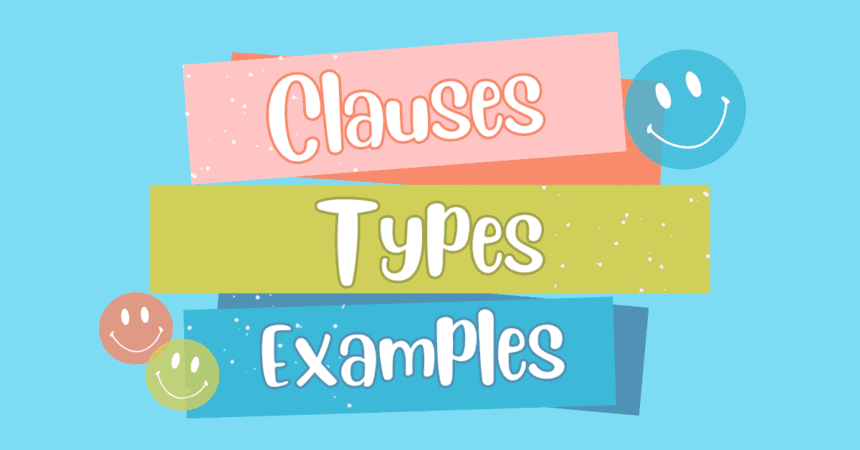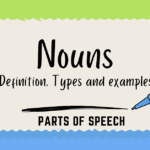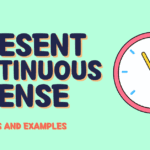A clause is a group of words that contains a verb and a subject and can function as a sentence or a part of a sentence. It is a unit of grammar similar to a sentence, but it may or may not be a complete thought.
Difference between Clause and phrase
The main difference between a clause and a phrase is that a clause contains a subject and verb and can stand alone as a sentence, while a phrase does not contain a subject and verb and cannot stand alone as a sentence.
A dependent clause (also known as a subordinate clause) begins with a subordinating conjunction such as “because,” “while,” or “although,” while a phrase does not contain a subordinating conjunction.
Here are some examples of clause and phrase:
Clause:
- She ate the pizza because she was hungry. (subject: “she”; verb: “ate”)
- After she finished her homework, she watched TV. (subject: “she”; verb: “watched”)
Phrase:
- The cat with the fluffy tail (does not contain a subject and verb)
- Walking to the store (does not contain a subject and verb)
Different Types of Clause:
Independent clause
An independent clause is a group of words that contains a subject and verb and can stand on its own as a complete sentence. An independent clause is also known as a main clause or principal clause.
Note
The term “principal clause” is not commonly used in grammar and is not a technical term. The term “independent clause” is more commonly used to refer to a clause that can stand on its own as a complete sentence.
Here is an example of an independent clause:
- The cat slept on the couch.
In this example, “The cat” is the subject and “slept” is the verb. Together, they form a complete thought and can stand on their own as a sentence.
Here is another example of an independent clause:
- I went to the store to buy milk.
In this example, “I” is the subject and “went” is the verb. The clause “to buy milk” provides additional information, but the independent clause still contains a subject and verb and can stand on its own as a complete sentence.
Independent clauses can be combined with other clauses to form complex sentences. For example:
- The cat slept on the couch, but the dog barked at the mailman.
In this example, both “The cat slept on the couch” and “the dog barked at the mailman” are independent clauses, and they are connected by the conjunction “but.” This creates a complex sentence with two independent clauses.
Dependent clause
A dependent clause is a group of words that contains a subject and verb but does not express a complete thought and cannot stand on its own as a sentence. A dependent clause is also known as a subordinate clause.
Dependent clauses are often introduced by subordinating conjunctions such as “although,” “because,” “if,” “when,” “while,” “since,” “until,” “where,” “whether,” and “before.” These conjunctions signal that the clause is dependent and cannot stand on its own as a sentence.
Here is an example of a dependent clause:
- Because the cat slept on the couch.
In this example, “the cat” is the subject and “slept” is the verb, but the clause does not express a complete thought and cannot stand on its own as a sentence. It must be combined with an independent clause to form a complete sentence. For example:
- Because the cat slept on the couch, I had to sit in the chair.
In this example, the dependent clause “Because the cat slept on the couch” is combined with the independent clause “I had to sit in the chair” to form a complete sentence.
Here is another example of a dependent clause:
- If I go to the store.
In this example, “I” is the subject and “go” is the verb, but the clause does not express a complete thought and cannot stand on its own as a sentence. It must be combined with an independent clause to form a complete sentence. For example:
- If I go to the store, I will buy milk.
In this example, the dependent clause “If I go to the store” is combined with the independent clause “I will buy milk” to form a complete sentence.
Adjective clause
An adjective clause is a dependent clause that functions as an adjective in a sentence. An adjective clause modifies a noun or pronoun in the same way that an adjective does, by providing additional information about the noun or pronoun. Adjective clauses are also known as relative clauses.
Adjective clauses are introduced by a relative pronoun such as “who,” “whom,” “whose,” “that,” or “which.” The noun or pronoun that the adjective clause modifies is called the antecedent.
Here is an example of an adjective clause:
- The cat, who was sleeping on the couch, woke up when I opened the door.
In this example, the adjective clause “who was sleeping on the couch” modifies the noun “cat” and provides additional information about the cat. The relative pronoun “who” refers back to the noun “cat,” which is the antecedent.
Here is another example of an adjective clause:
- The store, which is down the street, sells milk.
In this example, the adjective clause “which is down the street” modifies the noun “store” and provides additional information about the store. The relative pronoun “which” refers back to the noun “store,” which is the antecedent.
It’s important to note that an adjective clause must always be placed immediately after the noun or pronoun it modifies in a sentence. If the adjective clause is removed, the sentence should still be grammatically correct and make sense.
Noun clause
A noun clause is a dependent clause that functions as a noun in a sentence. A noun clause can be the subject of a verb, the object of a verb, the object of a preposition, or the complement of a verb.
Noun clauses are introduced by a subordinating conjunction such as “that,” “whether,” “if,” “why,” “how,” “what,” “who,” “whom,” “whose,” and “when.”
Here is an example of a noun clause functioning as the subject of a verb:
- What he said made no sense.
In this example, the noun clause “What he said” is the subject of the verb “made” and functions as a noun in the sentence.
Here is an example of a noun clause functioning as the object of a verb:
- I don’t know why he did that.
In this example, the noun clause “why he did that” is the object of the verb “know” and functions as a noun in the sentence.
Here is an example of a noun clause functioning as the object of a preposition:
- I’m not sure about what you said.
In this example, the noun clause “what you said” is the object of the preposition “about” and functions as a noun in the sentence.
Here is an example of a noun clause functioning as the complement of a verb:
- It’s important that we finish this project on time.
In this example, the noun clause “that we finish this project on time” is the complement of the verb “is” and functions as a noun in the sentence.
It’s important to note that a noun clause must always be placed in a position in the sentence where a noun could go. If the noun clause is removed, the sentence should still be grammatically correct and make sense, but the meaning may be incomplete or unclear.
Adverbial clause
An adverbial clause is a dependent clause that functions as an adverb in a sentence. An adverbial clause modifies a verb, adjective, or another adverb in the same way that an adverb does, by providing additional information about the time, place, manner, condition, or reason for the action or state described by the verb, adjective, or adverb.
Adverbial clauses are introduced by a subordinating conjunction such as “after,” “although,” “as,” “because,” “before,” “if,” “since,” “though,” “unless,” “until,” “when,” “where,” “while,” and “that.”
Here is an example of an adverbial clause modifying a verb:
- I will go to the store when I finish my homework.
In this example, the adverbial clause “when I finish my homework” modifies the verb “will go” and provides information about the time at which the action described by the verb will take place.
Here is an example of an adverbial clause modifying an adjective:
- I am happy because I passed my test.
In this example, the adverbial clause “because I passed my test” modifies the adjective “happy” and provides information about the reason for the state described by the adjective.
Here is an example of an adverbial clause modifying another adverb:
- I quickly finished my homework though I was tired.
In this example, the adverbial clause “though I was tired” modifies the adverb “quickly” and provides information about the manner in which the action described by the verb “finished” was carried out.
It’s important to note that an adverbial clause must always be placed in a position in the sentence where an adverb could go. If the adverbial clause is removed, the sentence should still be grammatically correct and make sense, but the meaning may be incomplete or unclear.
Coordinate clause
A coordinate clause is an independent clause that is joined to another independent clause by a coordinating conjunction. Coordinating conjunctions include “and,” “or,” “but,” “yet,” and “so.”
Coordinate clauses are equal in grammatical rank and can stand on their own as complete sentences. They are joined by a coordinating conjunction to form a compound sentence.
Here is an example of a coordinate clause:
- I went to the store, and I bought milk.
In this example, the two coordinate clauses “I went to the store” and “I bought milk” are joined by the coordinating conjunction “and” to form a compound sentence. Both clauses are independent and can stand on their own as complete sentences.
Here is another example of a coordinate clause:
- The cat slept on the couch, but the dog barked at the mailman.
In this example, the two coordinate clauses “The cat slept on the couch” and “the dog barked at the mailman” are joined by the coordinating conjunction “but” to form a compound sentence. Both clauses are independent and can stand on their own as complete sentences.
It’s important to note that a coordinate clause can only be joined to another independent clause by a coordinating conjunction. A dependent clause cannot be joined to an independent clause as a coordinate clause.
Non-finite clause
A non-finite clause is a clause that does not have a finite verb. A finite verb is a verb that indicates tense, such as present tense, past tense, or future tense. Non-finite verbs, on the other hand, do not indicate tense and do not indicate the time at which the action or state described by the verb takes place.
There are three types of non-finite verbs: the infinitive, the participle, and the gerund. Non-finite clauses are constructed using one of these non-finite verbs and a subject.
Here is an example of a non-finite clause with an infinitive verb:
- To go to the store is my plan.
In this example, the non-finite clause “To go to the store” is constructed using the infinitive verb “to go” and the subject “my plan.”
Here is an example of a non-finite clause with a participle verb:
- Walking to the store takes too long.
In this example, the non-finite clause “Walking to the store” is constructed using the participle verb “walking” and the subject “it.”
Here is an example of a non-finite clause with a gerund verb:
- Going to the store is my favorite activity.
In this example, the non-finite clause “Going to the store” is constructed using the gerund verb “going” and the subject “it.”
Non-finite clauses are often used to provide additional information about the subject or verb in a sentence. They can be used in various positions in a sentence, depending on their function.
Conditional clause
A conditional clause is a clause that expresses a condition or set of conditions that must be met in order for something to happen. Conditional clauses are introduced by the word “if” and are used to express the idea of possibility or probability.
There are three main types of conditional clauses: the zero conditional, the first conditional, and the second conditional.
The zero conditional is used to express a general truth or a scientific fact. It is formed using the present tense of both the verb “to be” and the main verb. For example:
- If you heat water to 100 degrees Celsius, it boils.
In this sentence, the conditional clause is “if you heat water to 100 degrees Celsius,” and the main clause is “it boils.” This clause expresses a general truth about the boiling point of water.
The first conditional is used to express a future possibility or probability. It is formed using the present tense of the verb “to be” and the future tense of the main verb. For example:
- If it rains tomorrow, I will stay home.
In this sentence, the conditional clause is “if it rains tomorrow,” and the main clause is “I will stay home.” This clause expresses the possibility that the speaker will stay home if it rains tomorrow.
The second conditional is used to express a hypothetical or contrary-to-fact condition in the present or future. It is formed using the past tense of the verb “to be” and the present tense of the main verb. For example:
- If I were rich, I would travel the world.
In this sentence, the conditional clause is “if I were rich,” and the main clause is “I would travel the world.” This clause expresses the hypothetical condition of the speaker being rich and the resulting action of traveling the world.
Conditional clauses are an important part of English grammar and are used to express conditions and possibilities in a clear and concise way.
Conclusion:
Clauses perform a variety of functions within a sentence. Independent clauses can function as the main clause of a sentence, expressing a complete thought and standing alone as a complete sentence. Dependent clauses, on the other hand, cannot stand alone as a complete sentence and must be connected to an independent clause to form a complete thought.
Dependent clauses can perform several different functions within a sentence. Adjective clauses modify a noun or pronoun and provide additional information about the noun or pronoun. Adverb clauses modify a verb, adjective, or adverb and provide additional information about the time, manner, or reason for the action described in the clause. Noun clauses function as a noun and can be the subject or object of a verb.
In addition to these functions, clauses can also be used to join sentences together. Independent clauses can be combined using a conjunction (such as “and,” “but,” or “or”) to form a compound sentence. Dependent clauses can be combined with independent clauses using a subordinating conjunction (such as “because,” “since,” “after,” “although,” “while,” or “until”) to form a complex sentence.
Overall, clauses play a crucial role in the structure and meaning of sentences in English. They allow us to provide additional information and clarify the relationships between different ideas within a sentence.








